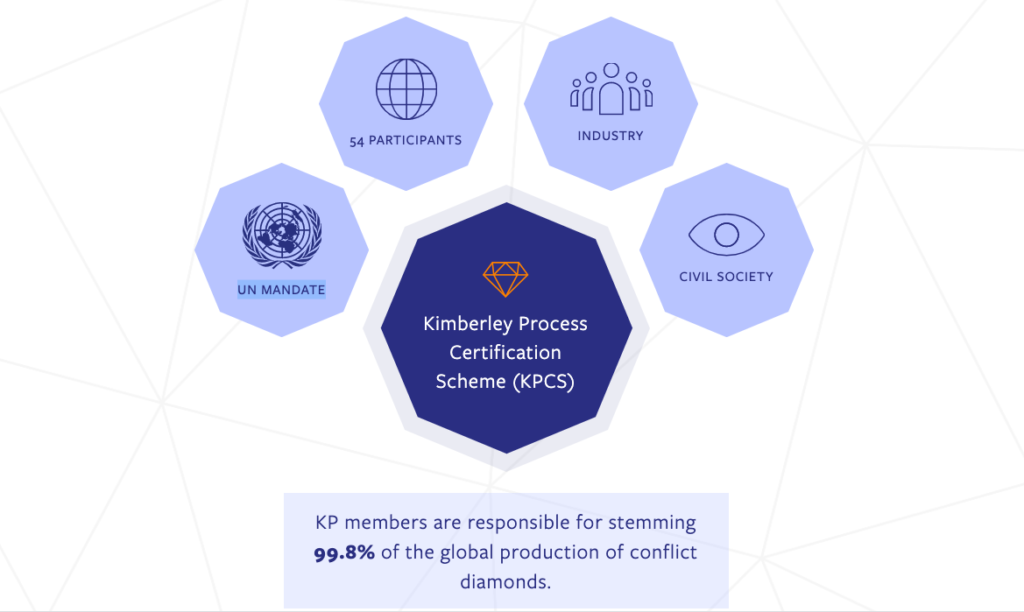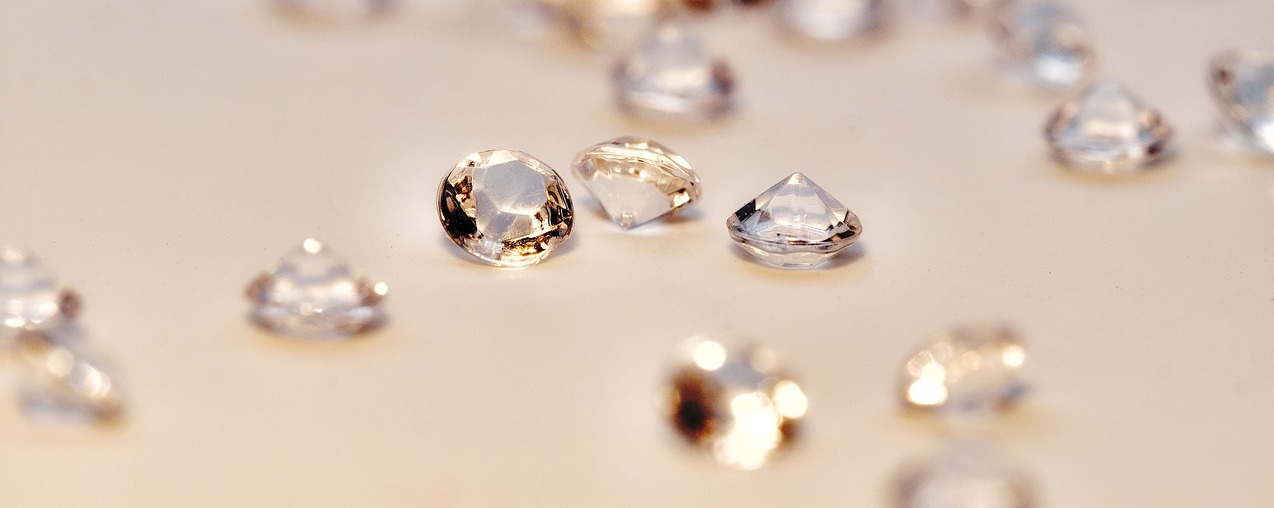From jewellery to purses, clothing, and even phones, diamonds are put on just about everything imaginable—for a price. Often a sign of wealth and prosperity, diamonds are highly sought after, especially in the Western world. But, what may be commonplace on fingers in London, is often mined thousands of miles away in poor, developing nations. Diamond-rich regions are some of the poorest areas in the world, many of which are also war-torn.
For decades, the industry has been ripe with ‘conflict’ or ‘blood’ diamonds, which are sold to arm militia groups in many nations. Forced workers mine them day after day to fund rebel groups in countries, such as Angola, Sierra Leone, and Zimbabwe.
Realizing the problem at hand, human rights organizations and industry leaders met in South Africa in May 2000, with the goal of addressing and implementing change. What emerged was The Kimberley Process.
The Kimberley Process is a UN-backed resolution to remove conflict diamonds from the international diamond trade. Established in 2002 and enforced in 2003, this international certification scheme helps to regulate a fair diamond industry. Praised far and wide, you might have seen it touted at your local jewellery store or from ethical brands. But, while the process definitely has had a positive effect on the diamond trade, the question remains on how much.
So How Does the Kimberley Process Actually Work?

The Kimberley Process works by allowing any country that imports or exports diamonds to join. They must meet requirements on where and how the diamonds are mined and may not be used to fund militia groups. Member nations must also pass legislation to comply with the requirements and impose regulations to ensure it’s carried out. If they do that, all the diamonds mined earn a certificate that ensures they can enter the legitimate diamond trade. It all seems pretty straightforward, right?
Unfortunately, like many good intentions, it has simply not lived up to its intended goal.
The Kimberley Process officially states that it keeps 99.8 percent of the international diamond trade conflict-free. Without diminishing the good it has done, many understand that this number is simply too good to be true. While the process has many moving parts, a few simple issues hinder its progress.
What Does ‘Conflict-Free’ Even Mean?
One main issue is the narrow definition of “conflict-free.” Because the Kimberley Process focuses solely on diamonds used to fund military conflicts, it fails to address the plethora of other issues in the industry.
These are oftentimes vast, but the main problems include the exploitation of workers and the impacts of mining on the local community. Child labour and unfair wages, environmental degradation, and loss of cultural sites are all issues the Kimberley Process doesn’t address. With such oversight, it’s easy to see why groups, like Global Witness, have claimed that the industry is as dirty as it has ever been.
A Global Process
Another issue is the fact the diamonds are hard to fully trace once they leave the mines. Certified diamonds are transported to India or the Middle East for shaping and polishing. That process itself rids the diamonds of their geographical markings. They also mix with thousands of other diamonds from around the globe. Add the fact that there are numerous cases of documentation fraud, and tracing diamonds becomes even harder. So, by the time they reach your local jeweller, it’s extremely difficult to identify the original source of a specific diamond. This creates an opportunity for smuggled and illegally mined diamonds to enter the supply chain.
Of course, this barely scratches the (diamond) surface of the problems within the industry, but it gives some insight into the potential shortcomings of the Kimberley Process.
This multilateral trade regime definitely has done some good. For one, it recognized a problem in the industry, and sought to change it. This is a definite step in the right direction. By creating some guidelines, it has also created progress. In the nearly two decades it’s been around, the Kimberley Process has created jobs, implemented basic oversight, and brought light to the issue. Unfortunately, it’s still far from enough.
Despite its issues, The Kimberley Process is a world-recognized name for conflict-free jewellery. For a long time, I believed that buying a KP-certified diamond was a sure-fire way to buy ethically. But, with these oversights and the continued corruption, it is far from perfect.
What are the Alternatives?
So, what other options do you have? Buying a diamond is usually a big deal in your life. It might signify you’re getting married or you reached a huge milestone in your career or relationship. But then, you hardly want that rock tarnished by the horrors it may have gone through to get to you.
Lab-Grown
For a more ethical diamond alternative, there are lab-created diamonds.
Diamonds take hundreds of thousands of years of heat and pressure to form deep in the earth. By recreating the same conditions in a lab, scientists are able to make diamonds in a fraction of that time. What they produce are chemically and physically the same as natural diamonds. While there are still concerns with their carbon footprint, they are generally better. Eliminating worker exploration, land degradation, and loss of cultural sites are big pluses. Sure, it might not sound as sexy to say your ring is synthetic, but would anyone even notice the difference?
Support Smaller Mines
Unfortunately, there is no other large-scale organization that regulates diamonds. Unlike coffee or clothing, a Fair Trade label is yet to exist. However, there are smaller organizations working to create change within the industry.
The Diamond Development Initiative works with The Kimberley Process, but focuses on small-scale mining in regional areas of Africa. It helps address environmental, labour, and cultural issues around diamond mining. Even though diamonds are not labeled as part of this group, by researching the regions and mines they work with, you can ensure you are buying a more ethical diamond. Supporting organizations like this will also help to bring about more change.
Overall, if you’re looking to buy a diamond, it’s important to research and ask questions. Can I trace the origin of my diamond? What country and mine is it from? What additional requirements does the supplier insist on? Luckily, there are companies that have taken the guesswork out of buying ethically. By choosing an ethical jewellery brand, you can ensure you’re buying from a company that cares about people and the environment, even if it’s not perfect.


 How Will Coronavirus Impact Fast Fashion?
How Will Coronavirus Impact Fast Fashion?
Leave a Reply